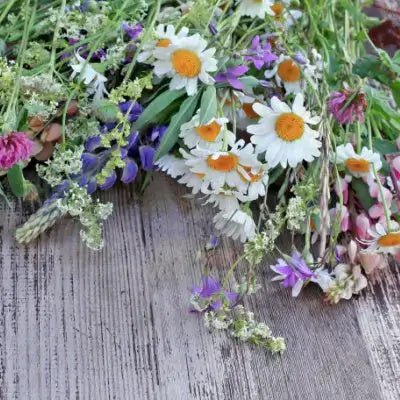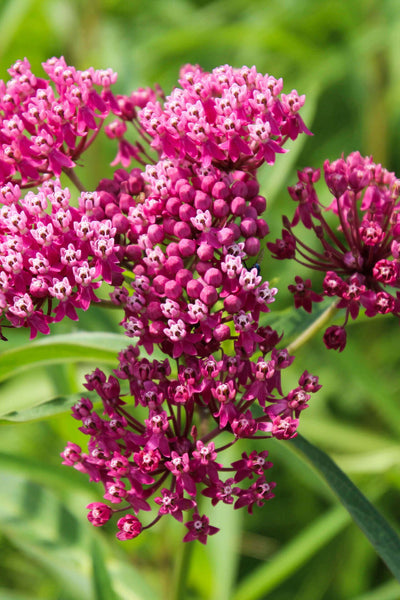Perennials Landscaping Benefits: An Everlasting Supplement To Any Garden
When landscaping, few plants have the perennial appeal, variety, and positive impact on the environment than perennials in landscaping. Due to their unique characteristic of coming back every year, they are commonly found in gardens and commercial landscapes alike. Whether you are creating a beautiful garden or you want to improve the curb appeal of the property, perennials are invaluable in developing aesthetically pleasing and eco-friendly outdoor spaces.
Decay-Free Charm and Color
Perhaps the most overt advantage of landscaping with perennials is their outstanding charm and appeal. Contrary to annuals, which only bloom per season, perennials bloom year after year. They come in a variety of colors, shapes, and textures, lowering the garden’s level of monotony. From the beautiful petals of spring tulips to the beautiful hues of the chrysanthemums in autumn, perennials make sure the garden is utterly beautiful every season.
Economic Value
Even though perennials might cover a bit more than annuals on ground-levels, the value spreads in the long run. The investment, over time saves both the time and money, as perennials do not need replacement every other year on the basis of the growing condition. As the plants grow, they will fill in more space and expand the roots, all at the same time, reducing the need for extra vacation plantings. This combine, in the long run, is a value proposition for the gardeners.
Little Extra Care
It's all true that perennials require minimal care once the plant is well rooted. Developed root systems will weather more and more. They will even do well in times of rising and falling temperatures, as well as dry conditions. In the future, perennials will do better than annuals in the aspect of care, which is why they are the right choice for the tight house owners. The same could be said for the commercial landscape contractors.
Positive Impact on the Environment
Perennials increase the overall health of the ecosystem for a number of reasons. Along the same lines, deeply buried roots help the soil aeration and reduce erosion. Blooms of the plant attract greatly needed eco-friendly small creatures for the Earth like bees, and humming birds. Roots of the plant host many microbes in the soil which are beneficial for the vegetation, soil and other support plants.
Water Efficiency
It’s important to conserve water in landscaping. A perennial’s root system is often more advanced than that of an annual, and because of this, they are able to tap into deeper water reserves. This helps to explain why perennials are more water-efficient than annuals. Also, varieties that are drought tolerant, like lavender and cone flowers, are great for water conscious gardeners as they need little water to thrive once established.
Contribution to Landscape
Perennials can help improve the overall appearance of a landscape. This is because, unlike annuals, which bloom for a short amount of time, perennials have staggered blooming periods which helps provide a constant source of color. For instance, crocuses and daffodils blooming in the spring signal the start of the new season while in the autumn, the arrival of asters and orange mums warms the landscape. This gives your garden life and character through each of the four seasons.
Flexibility in Gardening
Perennial flowers can fit into almost any type of garden. For example, they can be used to create a renowned garden which helps to frame the structure while adding a soft touch to a hard landscape. Perennial flowers can also be used as a focal point in the garden and are great for adding color. The way in which perennials come in different heights also helps to provide glamour to the design. This gives the appearance of an endless variety of design possibilities that suit the gardener's preferences.
Environmental Impact
While landscaping, perennials instead of annuals are a better choice. By reducing the need of replacing a plant, the need for transportation, new plant production, and environmental footprint gets reduced in the process, making perennials a good long-term eco choice for landscapers.
Rise in Value of Property
As soon as a person looks at a house or a commercial property, the first thing that captures their eyes is the landscaping. Well taken care of perennials can uplift the market value of the property by increasing the curb appeal. A professionally positioned perennial garden gives the property the impression of a space that is well kept, which is a major attraction for potential purchasers.
Learning Aspect
Perennials also open doors for a variety of other preliminary and more advanced learning topics. Whether it is about the life cycle of lower plants or it is about pollination, teaching aids are always welcome in the class. Soil, the ecosystem, and nature and their relationships in general offer a deeper understanding to curious minds.
Conclusion: Why are Perennials Important to Landscaping?
Adding perennials to your landscaping can provide a ton of positive benefits. Apart from looking elegant, they also serve a more important purpose. Whether your goal is to beautify your garden, save maintenance costs, or improve the ecosystem, perennials can help you. Their traits like being able to bloom throughout the seasons and being easy to care for will make sure they are a timeless classic for landscaping.
For your landscaping perennials visit TN Nursery – An online nursery to help you find perennials and all kinds of other plants.
FAQs
What are the benefits of perennials?
Perennials offer many benefits: stunning beauty, low maintenance, environmental friendliness, and yearly return. They enhance soil, attract pollinators, save water, are easy to grow, and suit any garden.
What is the rule of 3 in landscaping?
Odd numbers grouped together form what is termed the “rule of three" in landscaping. It is believed that having 3, 5, or 7 of plants is more aesthetically pleasing as grouped odd. With minimal care, trees can ensure a more balanced design as they diminish the chance of a scene becoming overly refined, thus aiding a garden in obtaining a more vigorous atmosphere. Other design structures also reflect this rule, like trees and flowers.
What is the 3 year rule for perennials?
The three year rule states that new plants shouldn’t be divided or moved for the first three years of their life. During this time, perennials learn to adapt to their roots and the new environment. By the third year, their age denotes they can withstand the forces of division or relocation. This waiting time serves the purpose of ensuring the plant is vigorous and healthy in the future.
What might be the advantage to a plant of being a perennial?
According to research, the biggest advantage of a perennial plant is the magnificent root systems which the plants are able to develop over the years. This adaptability helps the plants survive drought, eliminating the need to replant. Perennials are more adaptable, which helps to lower the cost of cultivation over the years. Their longevity and increased reproduction rate means that over the years, these plants will also keep getting more abundant, which enhances the scenery for years to come.
What are the cons of perennials?
Every flower has its thorn. There are a lot of disadvantages of having perennials, but most people don’t focus on them because of the beauty that surrounds them. For example, the increased beauty of the landscape is enhanced only when the amount of blooming flowers is more. Some plants will need a financial investment, but they are more expensive to maintain as compared to the annuals.
What do perennials attract?
Ever since I spent all summer around perennials, I knew their rosy stems were a bee magnet. I never would have guessed that these flowers could attract all kinds of wildlife, like hummingbirds and butterflies. There were even small bugs hiding in the shady part of the stems. What was even crazier than that was that these wildlife were living in my friendly green garden. I realized that perennials were a big part of my garden. Even then the green leaves were enough as a home for all these tiny creatures.





